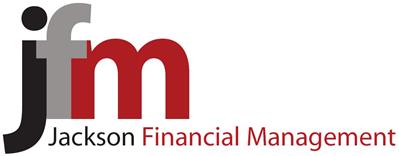Dreaming of retiring before you reach 50? The ‘secrets’ to early retirement may be more practical and achievable than you’d think.
While many people choose to work as long as they can, others want to retire early, perhaps in their 30s, 40s or 50s. If you’re in the latter category, you’ll want to have sufficient income-earning assets in place so you can live comfortably when you say goodbye to the workforce. Thanks to the FIRE (Financial Independence, Retire Early) movement, there’s an increasing spotlight on how to make an early retirement plan a reality.
When looking at Aussies who have retired recently, statistics gathered by the Australian Bureau of Statistics show that the average age we leave the corporate world behind is 62.9 years1. While many of us enjoy being in the workforce, many more stay employed simply because life without a regular income is not an option.

Retiring early is the aspiration, but getting there requires planning. Here, experts give tips on the secrets to early retirement: how you can have more time and flexibility to pursue your dreams – in the not-so-distant future.
Tips for setting up your retirement
Calculate your FIRE date – Aussie Firebug blog2
The first step is to imagine what your retirement will look like: think about what you’d like to be doing, when you’ve got the time to do it. Will you be active in retirement, exploring Australia or the world? Will you be picking up new hobbies, whether that’s golf or photography? Will you be eating out with friends and driving to visit family? What standard of living do you want to maintain – and just how much is the cost of living in the long term?
These are not easy questions to ask of your future self, but they’re necessary so you can work out how much money you’ll need in retirement, and what sort of financial plan and budget you’ll have to put in place to get there. Use a retirement calculator to help get a clearer picture of what you’ll need to live comfortably when you’re no longer working.
Once you know how much money you’ll need to retire, work out just how soon you can reach your savings goals. This means taking into consideration your current income streams, your day to day outgoing expenses, and the year you want to retire.
If your aim is to bring your retirement date closer, you’ll need to re-evaluate how much money you have and how much you are spending. Create a budget to see how you can boost the former and cut back on the latter or use our easy budget planner calculator.
“Save aggressively” – Ralph-Christopher Bayer, professor of economics at the University of Adelaide3
Professor Bayer says that FIRE is “a bit like dieting. [It’s] a very strict saving regime, with rewards in the future.” Unsurprisingly, living frugally now is one of the keys to being able to ditch work sooner. Your initial retirement budget is the best place to start to look at where you can cut back.
As you’ve probably done with other savings and financial goals, set up a separate account to help you save for an early retirement and channel a set percentage of your salary in here every month. As this grows, use the funds to generate a passive income stream. The sooner you start saving money, the sooner you’ll reach your targets.
“Have a passive income stream” – Peter Thornhill, author, Motivated Money4
A passive income is money that you have coming in without doing anything other than investing it in the first place. A good place to start is by working out what style of investor you are, and then consider what kind of portfolio would work best for your risk tolerance. A diversified portfolio might include different income streams, returns at different levels, and a cash flow that will suit retirement. Think stocks and bonds that collect dividends, as well as investment properties.
“Live mortgage free” – John Myers, Myers & Myers Real Estate5
The average home loan size in Sydney is more than $460,0006, according to the Australian Bureau of Statistics. Imagine if you were in a position to retire without having monthly interest and premium repayments on sizeable amounts like this hanging over your head? There are numerous strategies for reducing your mortgage payments fast, from setting up offset accounts to making lump-sum repayments.
“Get rid of other debts” – Karen Ford, author, Money Matters7
Most of the money you borrow comes with serious interest rates: between 2.5% and 5% for home loans, and even more for personal loans and credit cards. If you’re not paying off your loans, chances are you’re racking up serious debt managing the interest on them. The sooner you get rid of this debt, the sooner you can channel your funds into saving and investing money for your retirement.
This article represents the views of the authors and does not necessarily reflect the views of AMP.
1 Australian Bureau of Statistics (2017), 6238.0 – Retirement and Retirement Intentions, 20 December 2017
2 Aussie Firebug (2019), Calculate your FIRE date
3 ABC News (2019), Julianne and Luke are about to semi-retire – in their 30s. Here’s how they’re doing it, 6 September 2019
4 Aussie Firebug (2019), Podcast – Peter Thornhill
5 Cheapism (2020), 18 things to do if you want to retire early, 7 January 2020
6 Australian Bureau of Statistics (2017), 6238.0 – Retirement and Retirement Intentions, Australia, July 2016 to June 2017, 20 December 2017
7 Karen Ford (2018), Money Matters
Important: This information is provided by AMP Life Limited. It is general information only and hasn’t taken your circumstances into account. It’s important to consider your particular circumstances and the relevant Product Disclosure Statement or Terms and Conditions, available by calling Phone 02 9906 6566, before deciding what’s right for you.
All information in this article is subject to change without notice. Although the information is from sources considered reliable, AMP and our company do not guarantee that it is accurate or complete. You should not rely upon it and should seek professional advice before making any financial decision. Except where liability under any statute cannot be excluded, AMP and our company do not accept any liability for any resulting loss or damage of the reader or any other person. Any links have been provided for information purposes only and will take you to external websites. Note: Our company does not endorse and is not responsible for the accuracy of the contents/information contained within the linked site(s) accessible from this page.


